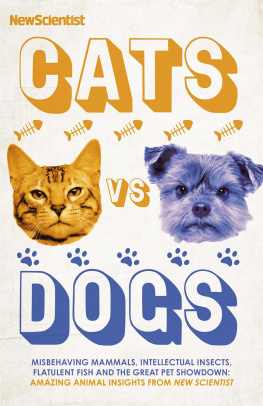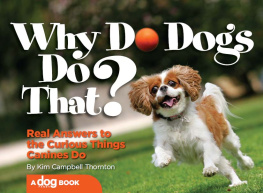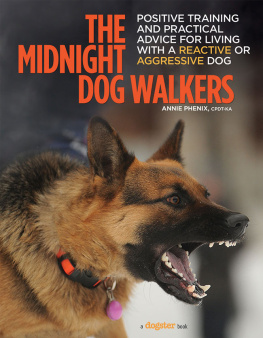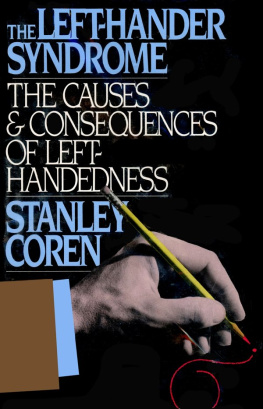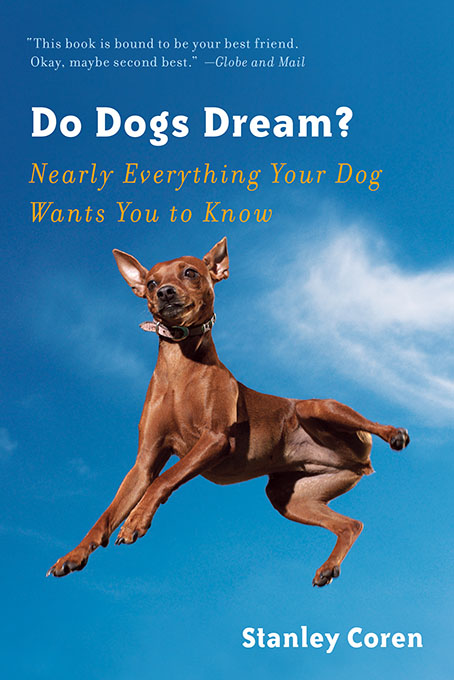
ALSO BY STANLEY COREN
The Intelligence of Dogs
How Dogs Think
How to Speak Dog
The Modern Dog
Why We Love the Dogs We Do
Born to Bark
STANLEY COREN
Do Dogs
Dream?
Nearly Everything
Your Dog Wants You to Know
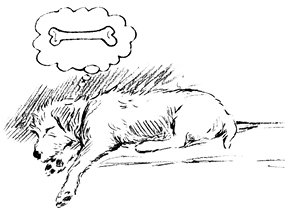
W. W. NORTON & COMPANY
NEW YORK LONDON
To Bam Bam, Loki,
Bishop, Corey, Sadie, Charley,
Maggie, Wiley, Jane, Barley, Slater,
Doodles, Elvis, and Cosmo
friends who recently went away
and are missed.
Contents
IS THERE SOMETHING SPECIAL
ABOUT PUPPIES AND OLD DOGS?
Preface
T HERE ARE SO many questions that most of us would like to ask our dogs about their behaviors, their origins, and their nature. Unfortunately, dogs tend to keep their secrets and never answer our queries directly.
As a psychologist and behaviorist, I have been studying and doing research on the behavior of dogs for nearly half a century. Ive published a dozen books on dogs and several hundred articles, in addition to having the television show Good Dog! , which was broadcast nationally in Canada for more than a decade. Since people know that Ive done such extensive work with dogs, theyre always asking me questions about particular quirks in their dogs behaviors. They want explanations for some of the strange things that dogs tend to do on a regular basis. They also want insights into dogs nature, personality, and emotional makeup, in addition to information about what sort of intellectual activity might be going on inside their dogs furry skulls.
The same questions seem to crop up again and again, as though they make up the core of information that we would like to know about our favorite pets, and perhaps what our dogs would like us to know about them if we could have an intimate conversation with them. This book attempts to answer most of those questions, and in the process it will expose you to some of the more interesting findings that researchers have discovered about dogs but that, for some reason, have not yet become common knowledge.
PART 1
How Do Dogs
Perceive the World?
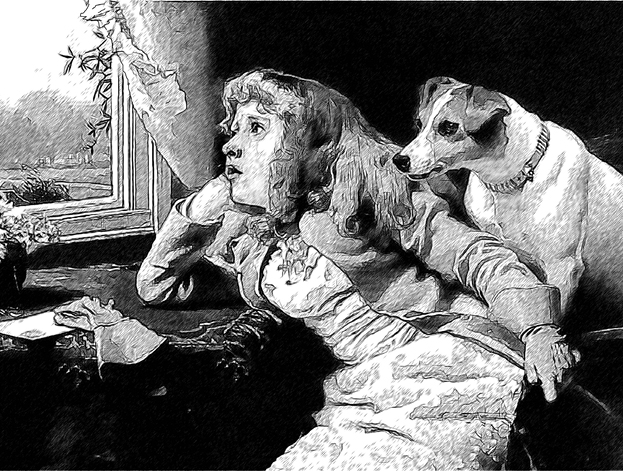
Do Dogs See Colors?
T HE SIMPLE ANSWER namely, that dogs are color-blindhas been misinterpreted by people as meaning that dogs see no color, but only shades of gray. This conception is wrong. Dogs do see colors, but the colors they see are neither as rich nor as varied as those seen by humans.
The eyes of both people and dogs contain special light-catching cells, called cones, that respond to color. Dogs have fewer cones than humans have, suggesting that their color vision is not as rich or intense as ours. However, the trick to seeing color is not just having cones, but having several different types of cones, each tuned to different wavelengths of light. Human beings have three different kinds of cones, and their combined activity allows us to see the full range of colors that characterizes human vision.
The most common types of human color blindness come about because one of the three kinds of cones is missing. An individual with only two cone types can still see some colors, but many fewer than someone with normal color vision sees. This is the situation with dogs, who also have only two kinds of cones.
Jay Neitz at the University of California, Santa Barbara, tested the color vision of dogs. For many test trials, dogs were shown three light panels in a rowtwo panels of the same color, and a third that was a different color. The dogs task was to press the panel that was different in color. Correct responses were rewarded with a treat that the computer delivered to the cup below that panel.
Neitz confirmed that dogs actually do see color, but many fewer colors than normal humans do. Instead of seeing the rainbow as violet, blue, blue green, green, yellow, orange, and red, dogs would see it as dark blue, light blue, gray, light yellow, darker yellow (sort of brown), and very dark gray. In other words, dogs see the colors of the world as basically yellow, blue, and gray. They see the colors green, yellow, and orange as yellowish, and they see violet and blue as blue. Blue green appears gray.
One amusing or odd fact is that the most popular colors for dog toys today are red or safety orange (the bright orange red on traffic cones or safety vests). However, red is difficult for dogs to see. It may appear as a very dark brownish gray or perhaps even a black. This means that that bright-red dog toy that is so visible to you may often be difficult for your dog to see. When your own pet version of Lassie runs right past the toy you just tossed, the problem may not be that the dog is stubborn or stupid, but that you chose a toy with a color that is hard for a dog to discriminate from the green grass of your lawn.
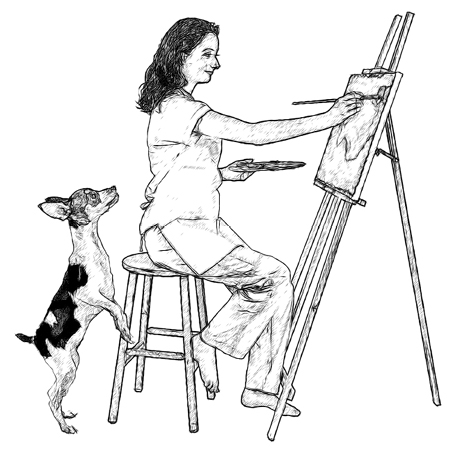
How Good Is a Dogs Vision?
V ISUAL ACUITY IS a measure of how small a visible detail can be and still be identified by a person. The most common way of testing vision is to use an eye chart (the kind you see in an optometrists office that has the big E in the top row). This chart is known as a Snellen Eye Chart , because it was designed by Hermann Snellen in the late 1800s. It uses symbols that are formally known as optotypes. Optotypes have the appearance of block letters and are intended to be seen and read as letters. They are not, however, letters from any ordinary typographers font collection. They have a particular, simple geometry in which the sizes of lines, gaps, and white spaces are carefully determined so that if you cant see them clearly enough, the letters become confusing and difficult to read. The letters (and the white spaces and gaps that define them) get progressively smaller as you move down the chart. The line with the smallest letters that you can read is a measure of your visual acuity or, more specifically, your eyes detail-resolving ability.
The number assigned to your acuity is based on how you compare to a person known to have normal visual acuity. If you are tested at a distance of 20 feet and can read the same line of letters that a person with normal vision can read at 20 feet, then the Snellen measure of your vision is 20/20 (or 6/6 if youre measuring the distance in meters). If your vision is not that good, then you will need the letters printed larger to read them at that distance. For example, if the letters that you can just barely read correctly at 20 feet are large enough that a person with normal vision can read them at 40 feet, your vision is 20/40 (or 6/12).
Obviously we cant get a dog to read rows of letters for us, so we use another technique for determining a dogs visual acuity. In this test we want the dog to demonstrate to us that he can see the details that define a pattern. The pattern we use for dogs is a simple grid made up of equal-sized black and white vertical stripes. We put this pattern up next to a uniform gray pattern. Dogs who have vision good enough to see the striped pattern and who correctly pick out that pattern get a treat. Dogs who pick the gray pattern get nothing. Next we run the test with stripes that become narrower and narrower. This test is equivalent to making the letters on the eye chart smaller and smaller. Eventually the stripes will be so thin that the dogs visual acuity will not allow him to see that the stripes are there. At this point the stripes blur and smear in the eye, and the card with the stripes will look the same as the card with the uniform field of gray. When the size of the stripes just arrives at this point, we have reached the limits of the dogs visual acuity. The size of the stripes that the dog can see can be converted to the same Snellen acuity measure that we get from an eye chart used to test people.
Next page


